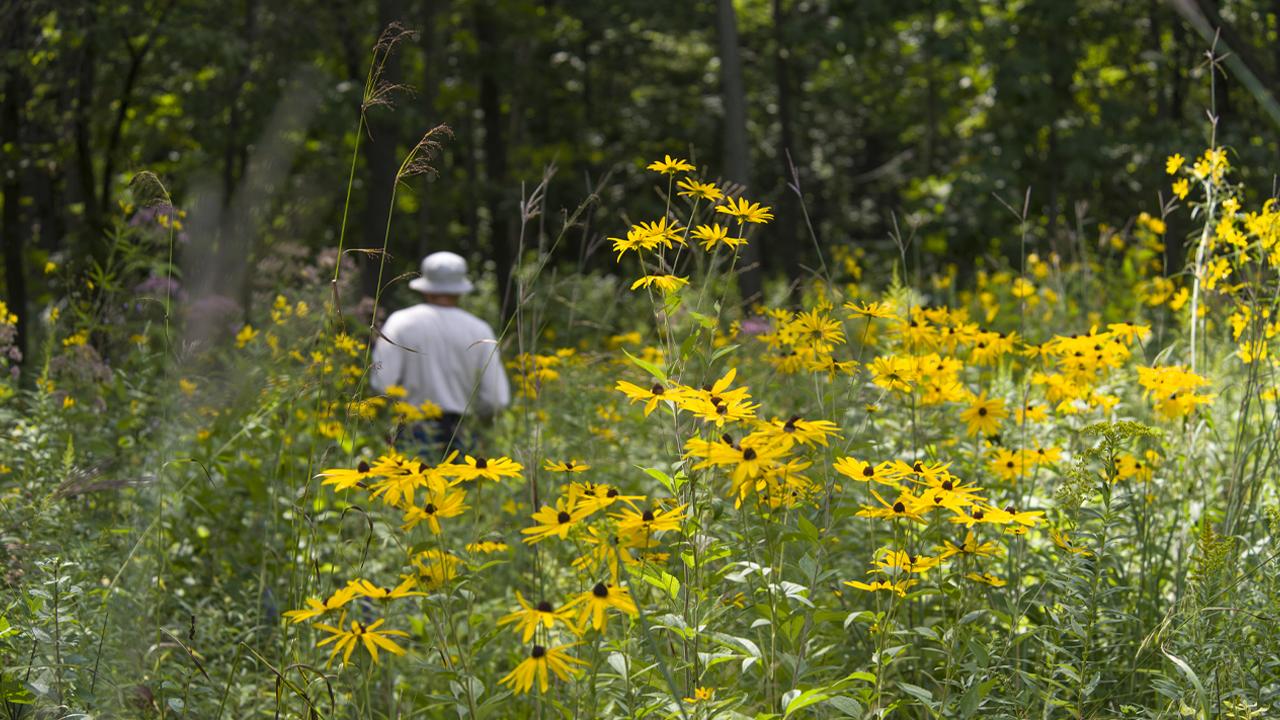

Conservation Walk #1
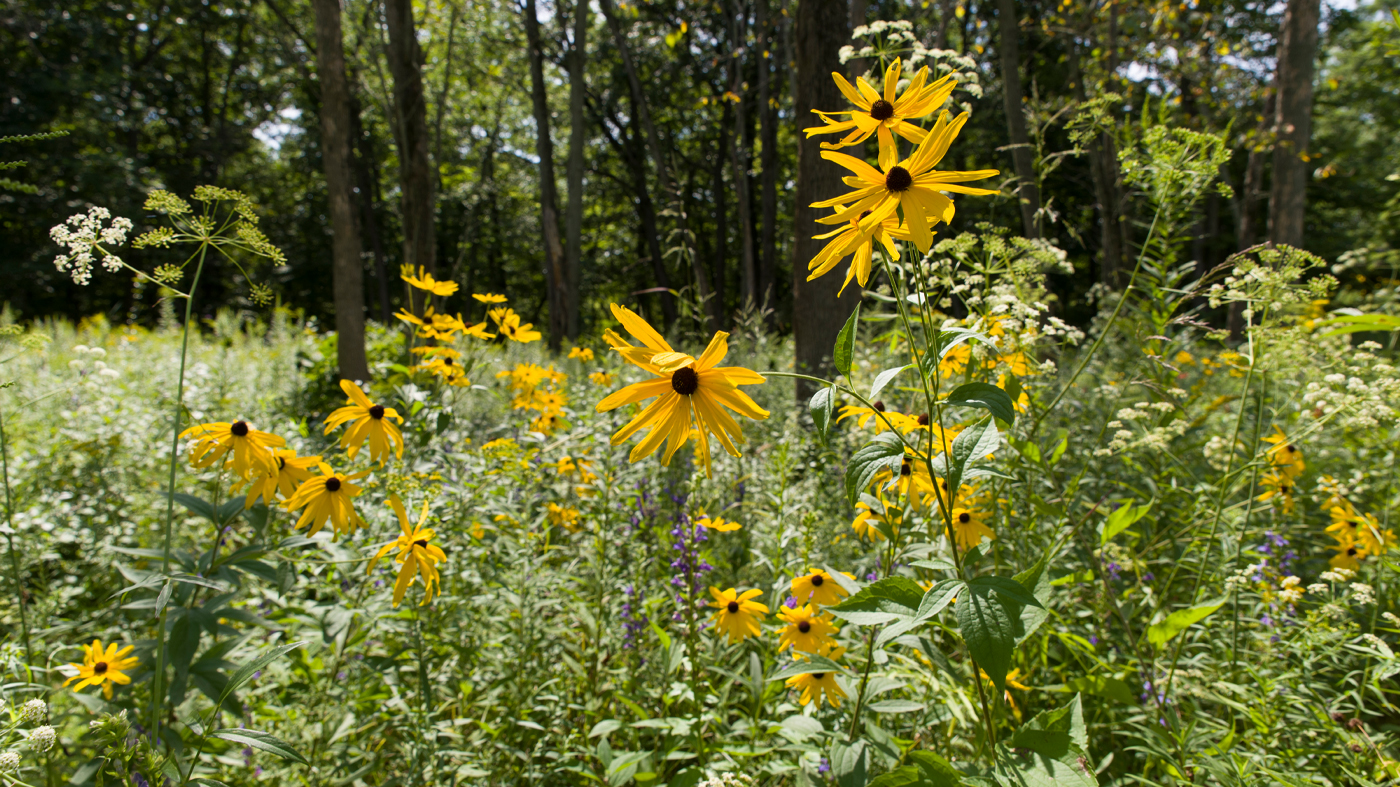
Conservation = Restoration
A rare remnant of the oak woodlands once common in northeastern Illinois, Mary Mix McDonald Woods is, in conservation terms, a restoration — an example of an ecosystem that is being brought back to healthy former conditions. Because of the constant efforts of scientists and volunteers to remove invasive species and sow native plants, this natural area is slowly being reclaimed. One measure of the success so far is an increase in the number of uncommon species such as the Appalachian-eyed brown butterfly and redheaded woodpecker.
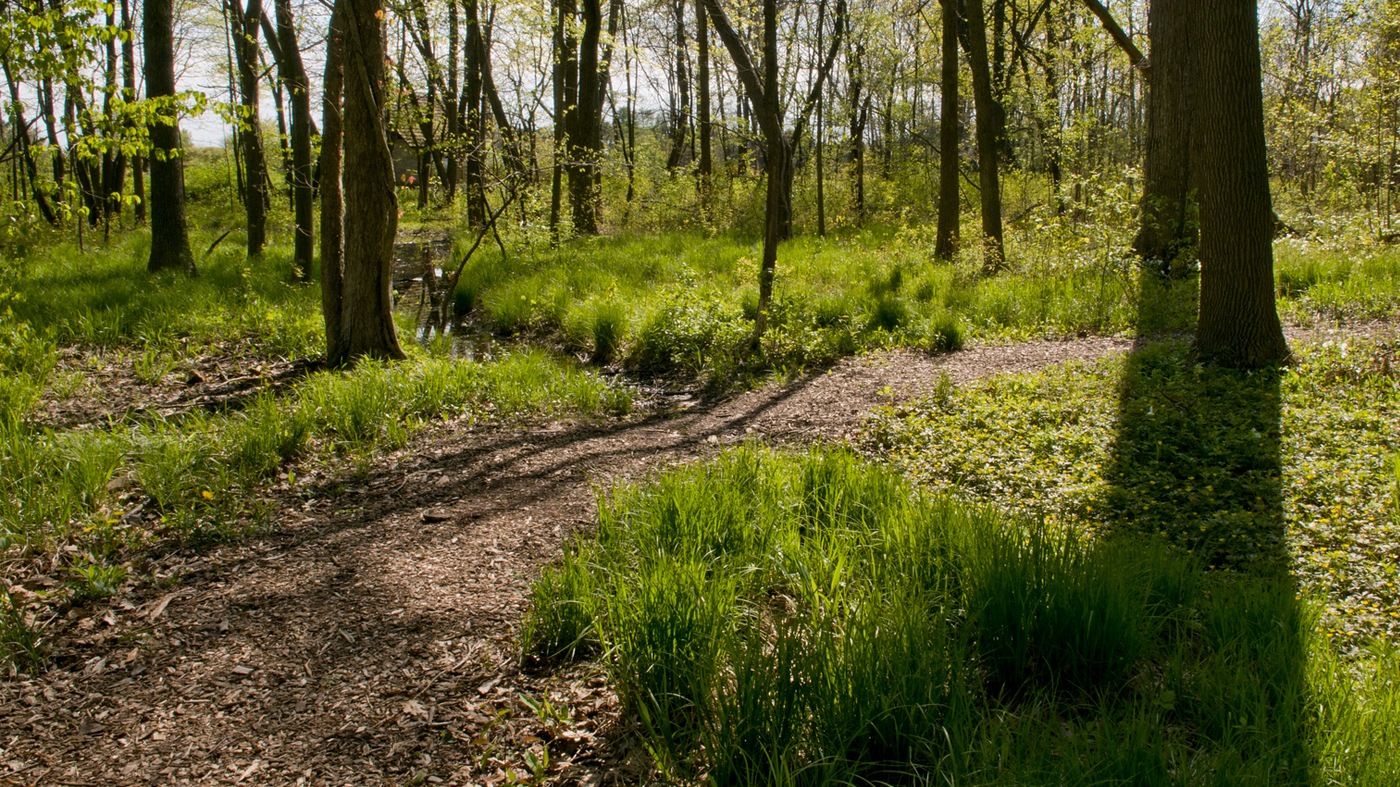
Conservation = Rooting Out Invasive Species
Having suffered from neglect, habitat fragmentation (being cut off from connecting ecosystems by agriculture or development), and the rampant spread of invasive species like prickly buckthorn and garlic mustard, the oak woodland was a mostly dark and rather dreary place when conservation first began. Today the sun shines once more on the woodland floor in areas where scientists and volunteers have done the labor-intensive work of cutting, burning, and pulling out invasive plants.
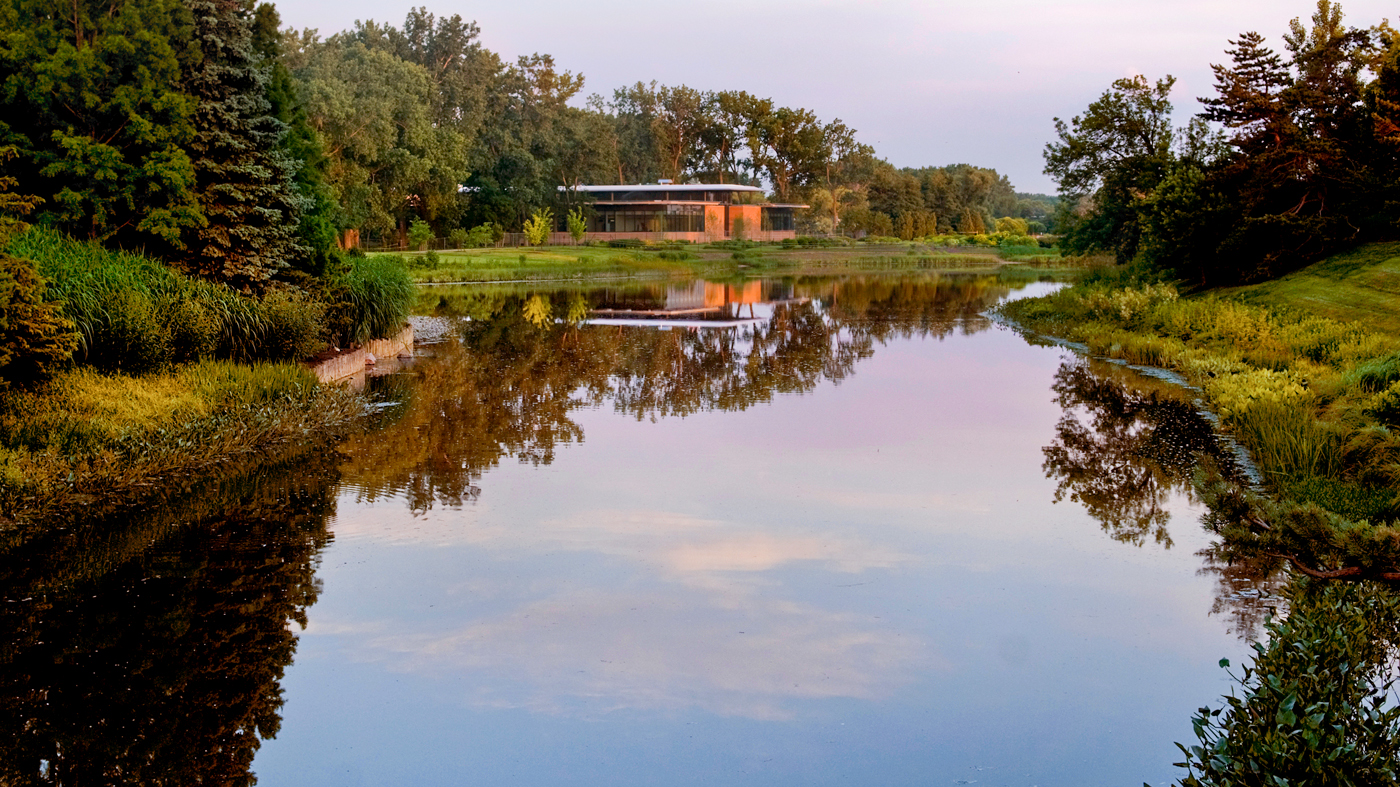
Conservation = Healthy Waterways
After walking past the woods, the view changes dramatically — water enters the scene. Of the Garden’s 385 acres, nearly one-fourth (81 acres) is water. In order to conserve water quality, we don’t use chemical herbicides to control nuisance aquatic weeds. Instead, we rely on manpower — specifically, on student ecologists who don waders and use rakes to remove unsightly mats of algae and invasive shoreline weeds. See the water quality for yourself: at this rare break in the shoreline plantings, you can walk right down to the water’s edge. There, you may see bass and bluegills…and the occasional invasive carp.
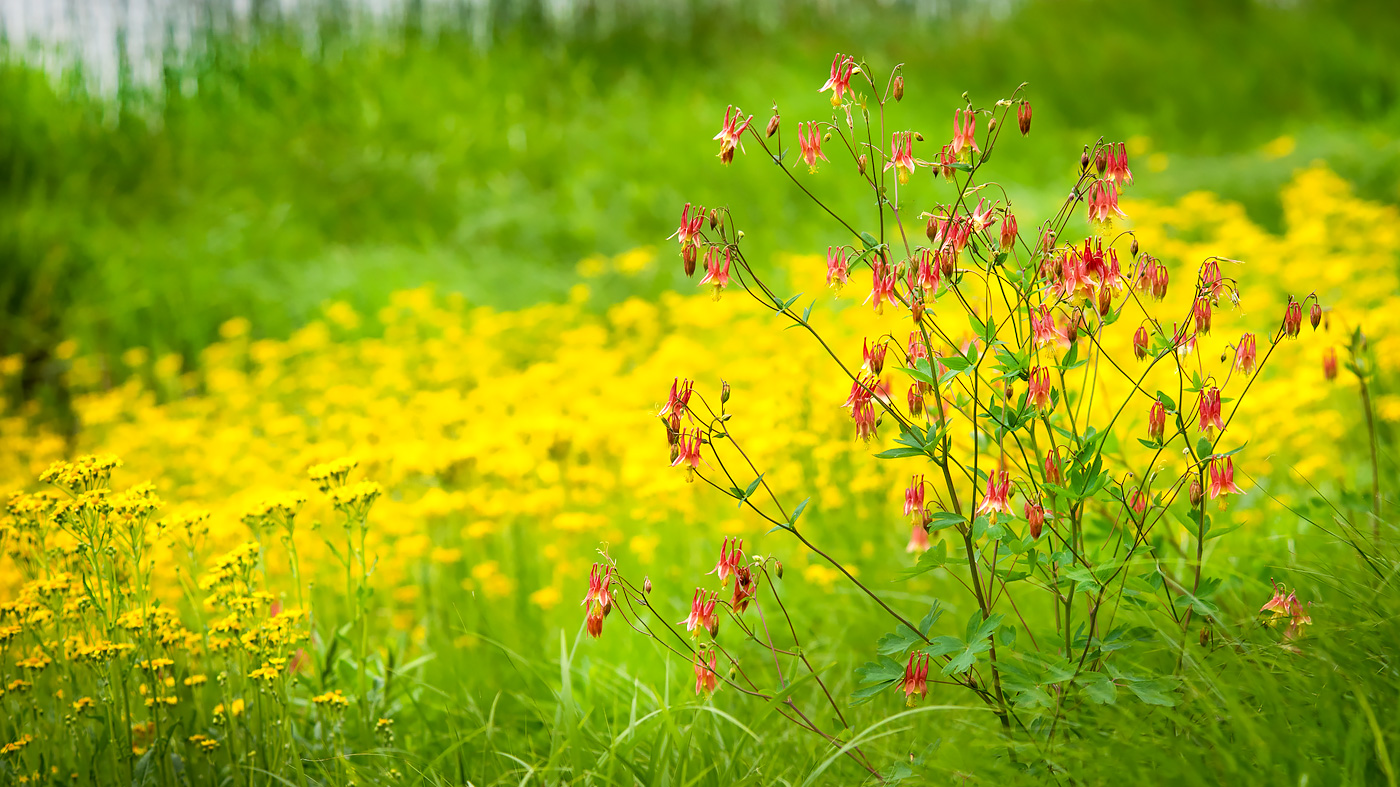
Conservation = Investing in Habitat
While continuing along the the East Road toward the Plant Science Center, notice the diversity of aquatic plantings at the water’s edge. It’s the result of conservation efforts begun in the late 1990s. Over the years, summer waves, winter ice, burrowing animals, and shallow-rooted turf grass all created erosion along our nearly six miles of shoreline. To combat it, shallow shoreline shelves were installed to hold plants, and carefully sited boulders (plus fibrous rolls and mats) were placed to absorb wave action. But it is the plants that truly stabilize the shoreline edge. To date, more than 300,000 aquatic plants, most of them native species, have become not only part of the shoreline infrastructure but also important habitats for fish, frogs, turtles, and birds.
Arranged in eye-pleasing drifts, some plantings extend out 30 feet from the lake’s edge. These tough, resilient native species can withstand heavy midwestern thunderstorms — and even survive with up to 5 feet of water covering them for up to a week.
Shoreline conservation continues. Environmental Protection Agency funding helped to restore this one-mile stretch that leads up to the Plant Science Center.
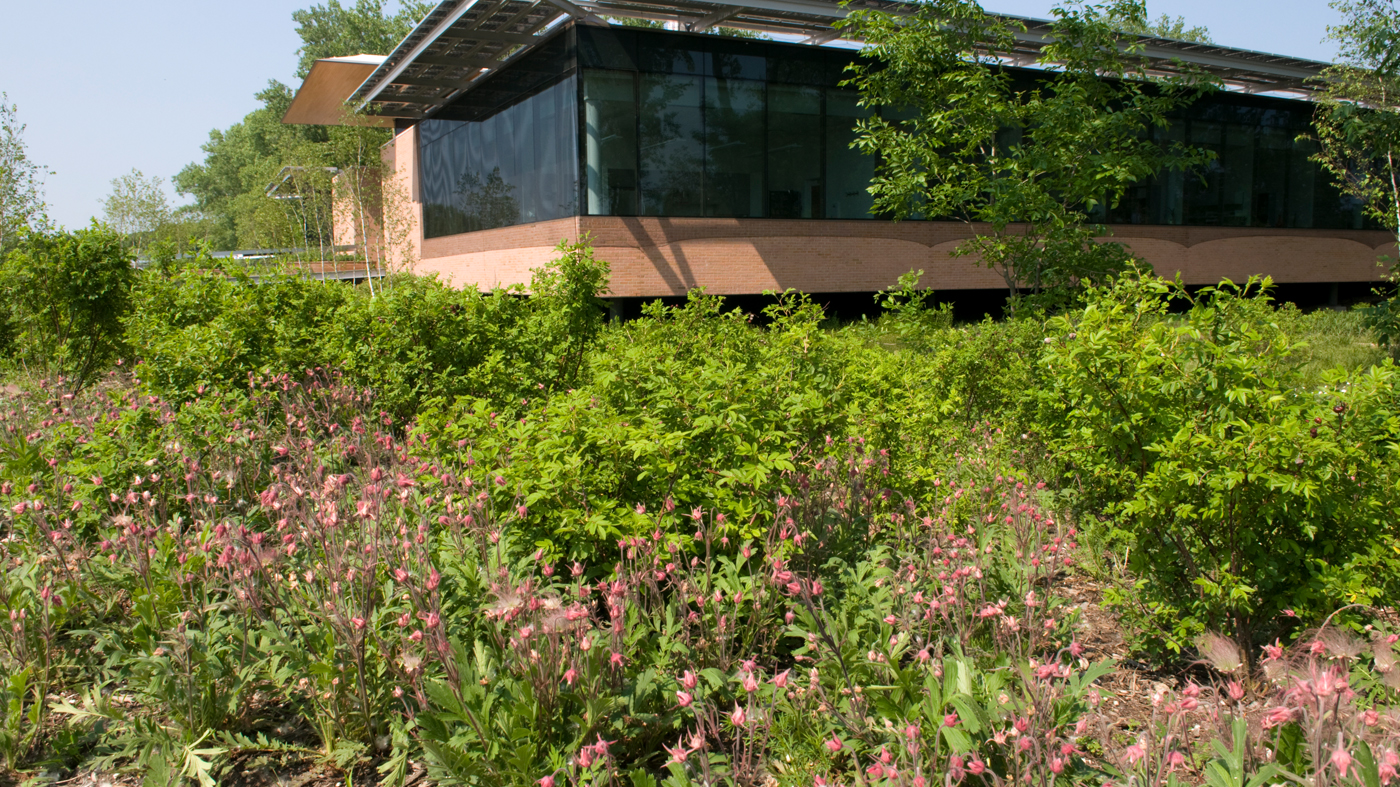
Conservation = A Rainwater Glen
At the bend in the road, the new Daniel F. and Ada L. Rice Plant Conservation Science Center comes into view. Surrounding it is the Rainwater Glen — a landscape of water-loving plants that absorbs rainwater runoff in this often-wet site. Because the plants filter pollutants naturally, the water that eventually reaches the lake system is cleaner than water running directly in from the roof or roadways.
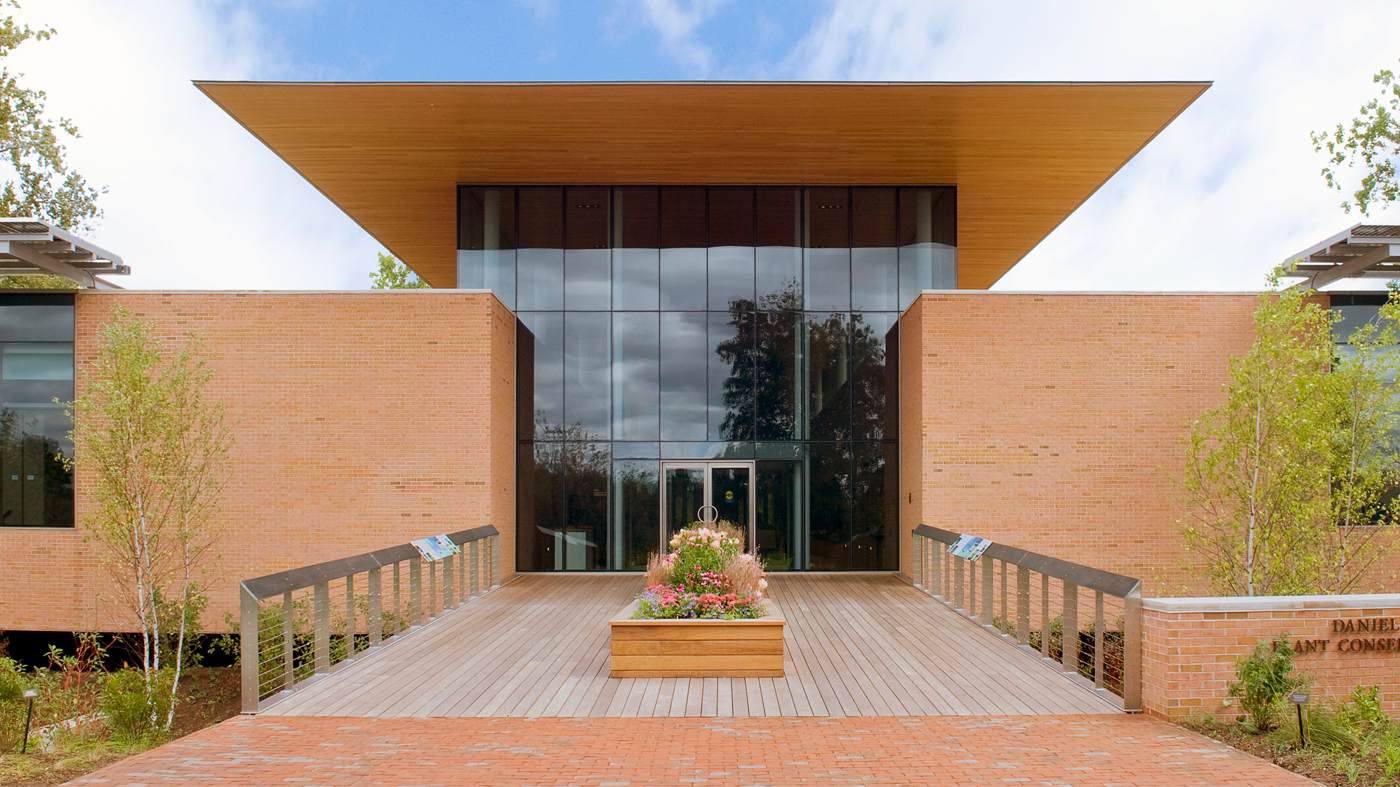
Conservation = A Sustainable Building
Conservation is at the heart of the Daniel F. and Ada L. Rice Plant Conservation Science Center. Energy efficiency, recycled building materials, solar panels, a green roof, and even extra bike racks all contributed toward the coveted LEED-gold certification from the U.S. Green Building Council. The building earned its Gold LEED rating with points in six categories, including sustainable sites, water efficiency, energy and atmosphere, material and resources, indoor environmental quality, and innovation and design process. This is a beautiful building.
Your walk is an act of conservation in itself. Enjoy your visit!

